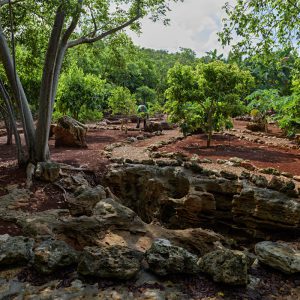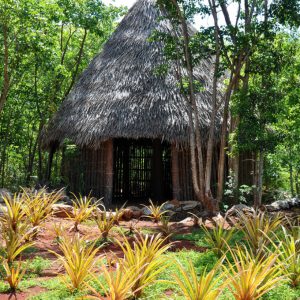Bahamian Islands
This part of the Preserve tells the story about the plants that fed the people of The Bahamas.
Setting the scene is a Lucayan (indigenous Indian) hut, built by hand from Bahamian pine stands at the entrance to the edible history garden. Here, plants that sustained the Lucayans – including the white Eleuthera pineapple, sea grapes and coco plum are brought together for the first time in hundreds of years. The fruits and vegetables including citrus oranges, and key limes imported by the Spanish and the sugar cane, and mangos imported by the English settlers, as well as the food crops, plantain, pigeon peas and okra cultivated by the Africans are also on display.
Notice the red dirt found in the beds. This red dirt is naturally blown to The Bahamas from the African Sahara Dessert, swept up high in the clouds during major dust storms and then deposited in The Bahamas usually during hurricanes. The dirt is high in iron and increases the acidity of the very alkaline Bahamian soil, making it better suited for farming. The island of Eleuthera has a lot of this red soil, typical of the Easterly Bahamian Islands.


